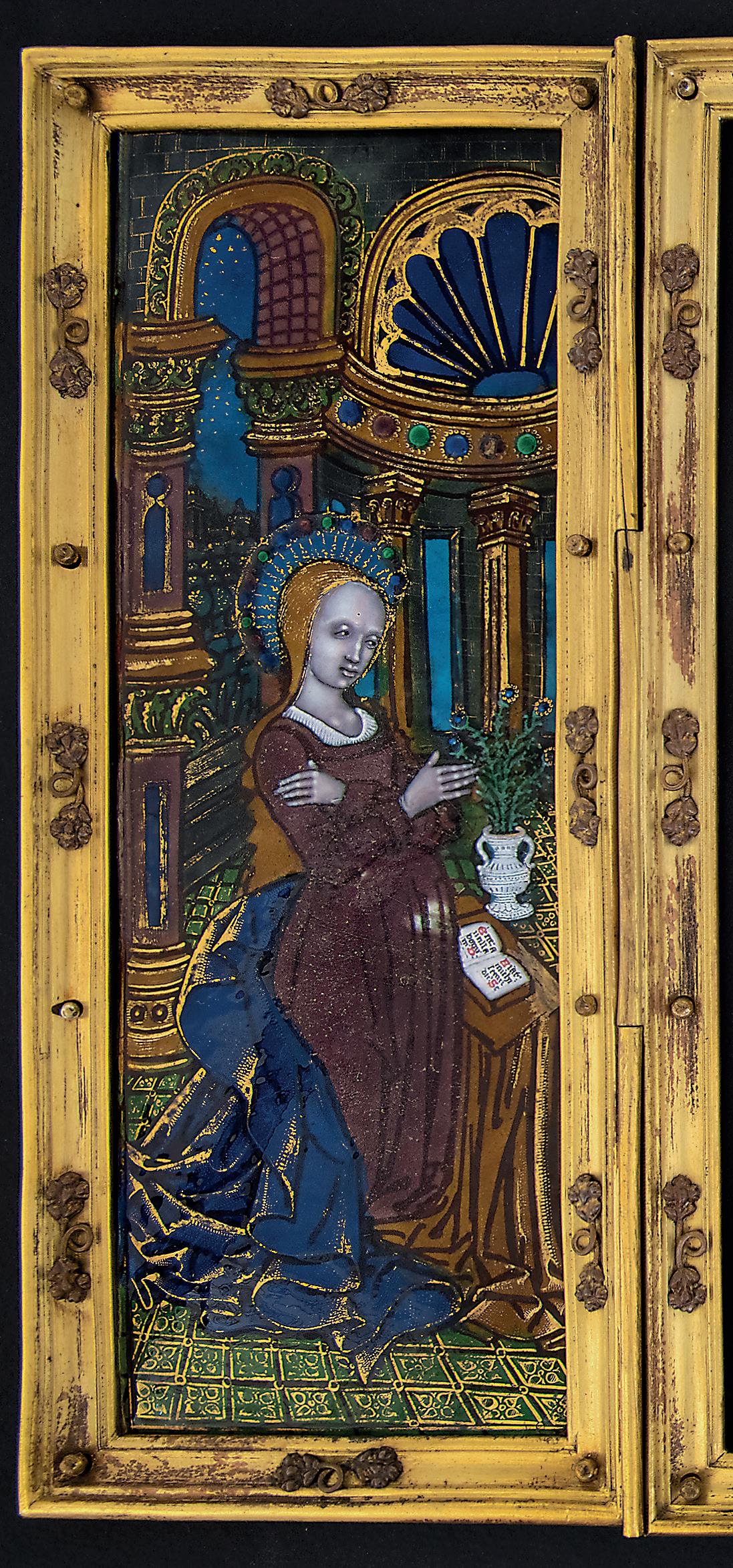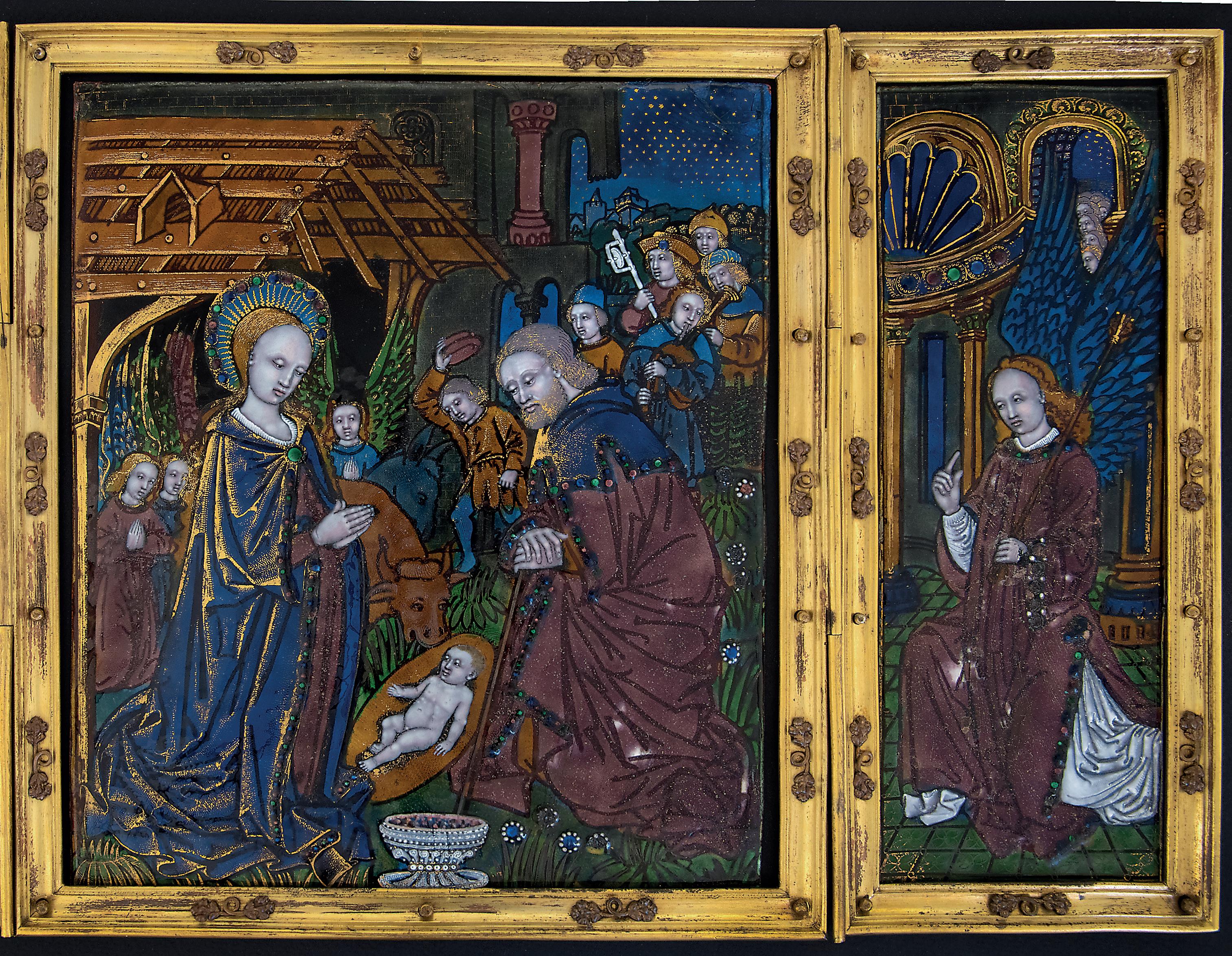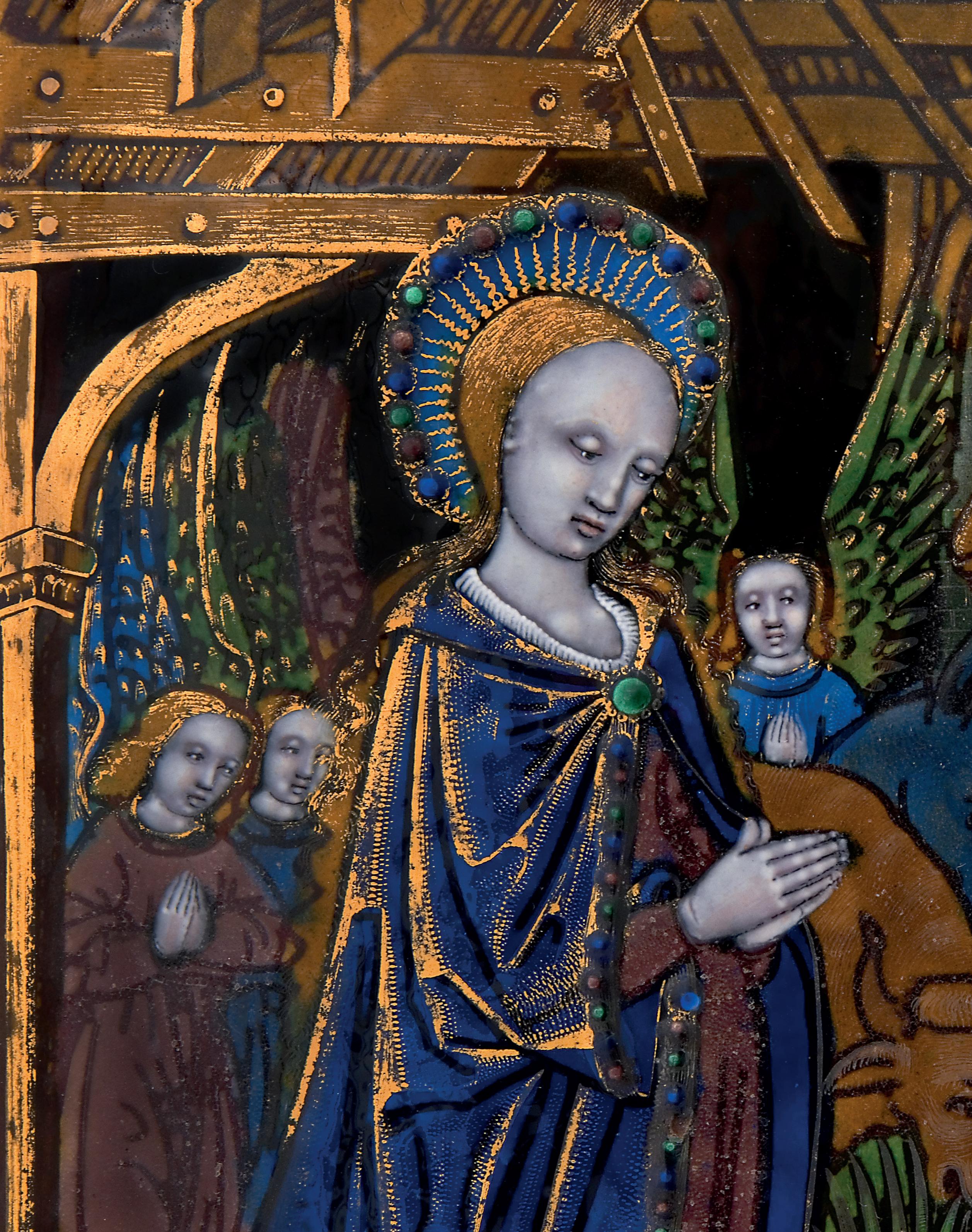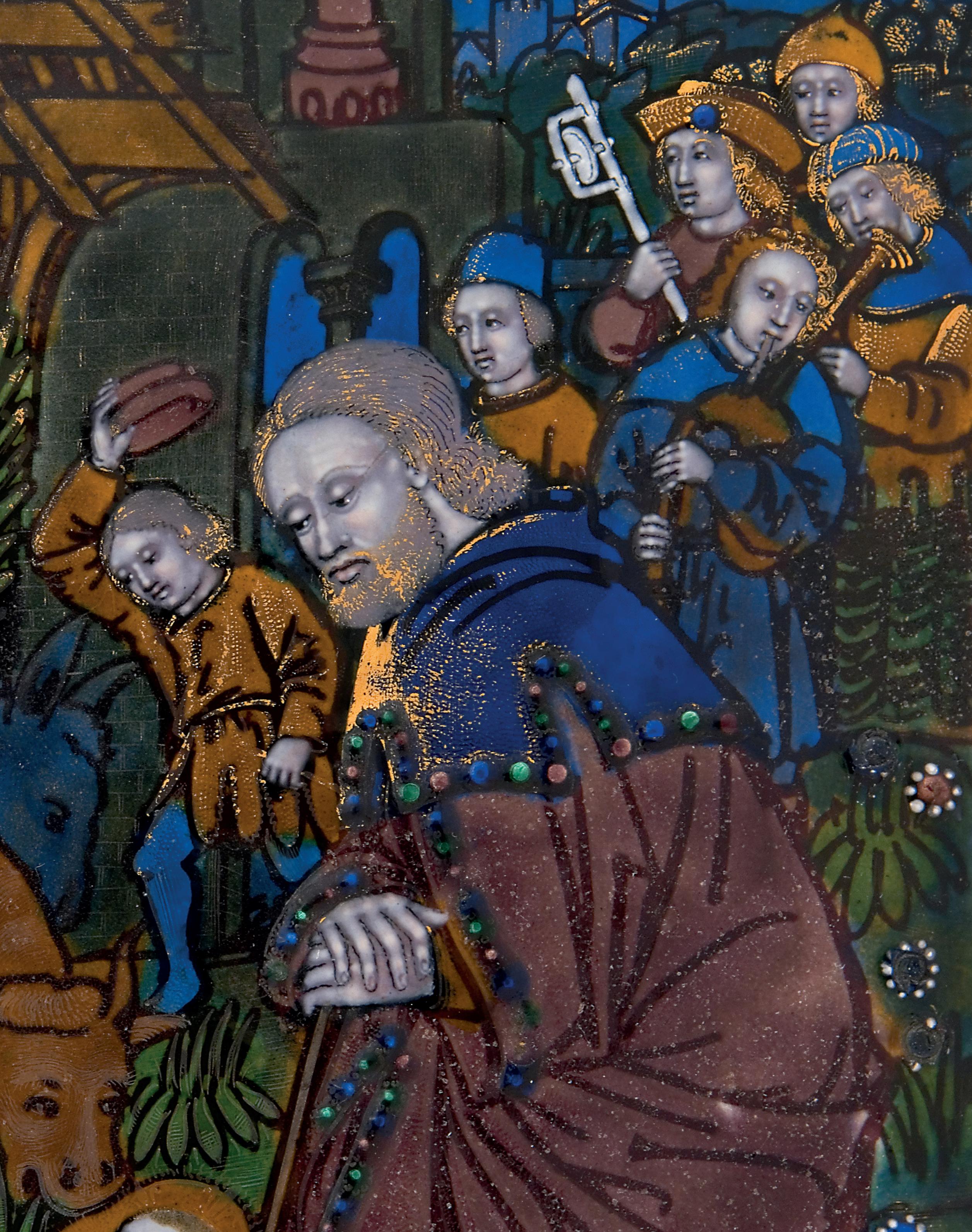
Workshop of Nardon Pénicaud (1470/1475–1542)
Adoration, Flanked by the Virgin Annunciate and the Archangel Gabriel
Enamels: ca. 1530; metal frame: 19th century
Polychrome enamel on copper, paillons, gold; frame: gilt copper alloy
Middle panel: 21 × 17.8 cm; side panels: 21 × 7.6 cm; total with frame: 40.4 × 23 cm Inv. 1189 Carrand
bibliography : Rossi 1889, p. 19; Supino 1898, p. 283 no. 1189; Gerspach 1904, p. 16; Marquet de Vasselot 1921, I, pp. 133–134 no. 111, pp. 279–280, pl. XXXIX; “Pénicaud” 1956, p. 582; Belli Barsali 1966, p. 113 no. 49; Verdier 1967, p. XIX; Cordera 2008, cat. 8, p. 55; Venturelli 2010, cat. 10, p. 56; Blanc 2011, cat. 10, pp. 46–48.
Cited for the first time by Umberto Rossi (1889) and attributed, as with the Carrand triptychs inv. 1187 C and inv. 1188 C, to Nardon Pénicaud but considered a “much more refined piece” compared with the other two, this triptych has an Adoration in the middle panel and a Virgin Annunciate and the Archangel Gabriel to the sides. The attribution to Nardon Pénicaud was accepted by Jean-Joseph Marquet de Vasselot (1921), who suggested that the Bargello piece marked a new phase in the work of the enameller, distinguished by more complex compositions and less rigid renderings of the figures, perhaps indicating the “fin de l’activité de l’atelier.” The French scholar also noted the triptych with the same iconography formerly in the Grandjean collection, which he attributed to the workshop of Nardon Pénicaud 1—the enamel that came to the Musée des Arts Décoratifs, Paris, inv. Gr 5 in 19102 —seeing similarities between the portrayals of the Archangel Gabriel in both works3 and finding the bowl in the foreground in the central panel of both enamels to be identical. He also viewed the white object carried by one of the people in the procession, which I believe is a sistrum,
to be similar in the two triptychs. Philippe Verdier also accepted the attribution of the Carrand triptych to Nardon Pénicaud, agreeing with Marquet de Vasselot that it dated “to the last period of his career.”4 Paola Cordera (2008) dated it to the fifth decade of the sixteenth century, attributing it to either “ Nardon Pénicaud ” or the “Master of the Orléans Triptych,” seeing the treatment of “Mary’s hairline” to be “like that of female figures” by that enameller, as with the handling of the drapery. In addition to imagining illuminated Franco-Flemish Books of Hours as a probable source, she also observed that the “gilt copper frame” embellished with the decorative motif of knotted ties culminating in little roses was like the ones produced by Alfred André in the 1880s. Discussing the above-mentioned triptych at the Musée des Arts Décoratifs, Paris (inv. Gr 5), Monique Blanc, who held that it was made in the workshop of Nardon Pénicaud’s younger brother, Jean, around 1525–1530, mentions the Bargello enamel, considering it to be “très proche” to the one in the Paris museum.5 A nalysing the identical detail in the side plaque, I linked the rendering of the figure and the par-




